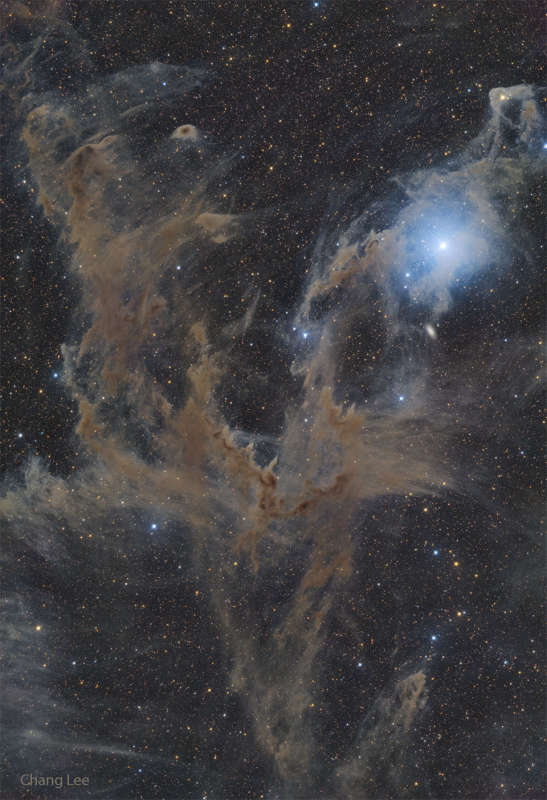Credit & Copyright: Chang Lee
Explanation:
Sometimes the dark dust of interstellar space has an angular elegance.
Such is the case toward the far-south
constellation of Chamaeleon.
Normally too faint to see, dark dust is best known for
blocking visible light from stars and galaxies behind it.
In this 36.6-hour exposure, however,
the dust is seen mostly in light of its own,
with its strong red and near-infrared
colors creating a brown hue.
Contrastingly blue, the bright star
Beta Chamaeleontis
is visible on the upper right, with the dust that surrounds it preferentially reflecting
blue light from its primarily blue-white color.
All of the pictured stars and dust occur in our own
Milky Way Galaxy with one
notable
exception: the white spot just
below Beta Chamaeleontis is the galaxy
IC 3104 which lies far in the distance.
Interstellar dust is mostly created in the cool atmospheres of
giant stars
and dispersed into space by stellar light,
stellar winds, and
stellar explosions such as
supernovas.
1999 2000 2001 2002 2003 2004 2005 2006 2007 2008 2009 2010 2011 2012 2013 2014 2015 2016 2017 2018 2019 2020 2021 2022 2023 2024 2025 |
Январь Февраль Март Апрель Май Июнь Июль Август Сентябрь Октябрь Ноябрь Декабрь |
NASA Web Site Statements, Warnings, and Disclaimers
NASA Official: Jay Norris. Specific rights apply.
A service of: LHEA at NASA / GSFC
& Michigan Tech. U.
|
Публикации с ключевыми словами:
dark nebula - темная туманность
Публикации со словами: dark nebula - темная туманность | |
См. также:
Все публикации на ту же тему >> | |
